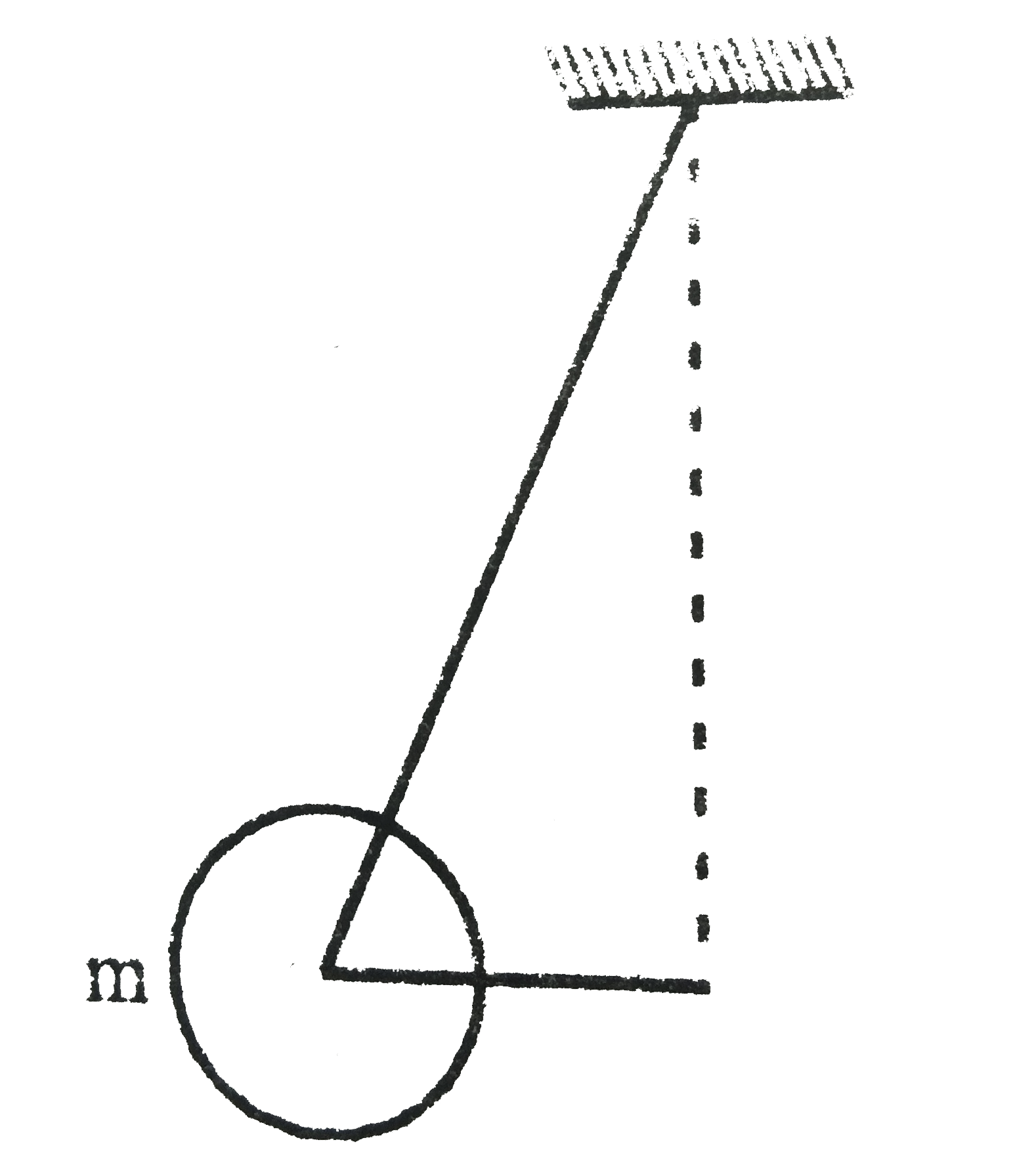There are two vectors →A=3ˆi+ˆj and →B=ˆj+2ˆk. For these two vectors-
(a) Find the component of →A along →B in vector form.
(b) If →A&→B are the adjacent sides of a parallalogram then find the magnitude of its area.
(c) Find a unit vector which is perpendicular to both →A&→B. Solution in Gujrati
→A
→B
→A×→B
→A & →B
The correct Answer is:D
→A×(→A×→B)=→A(→A.→B)−→B(→A.→A)⇒ this vector lies in plane of →A & →B
Topper's Solved these Questions
- BASIC MATHSBOOK - ALLEN CHAPTER - BASIC MATHSEXERCISE - Exercise-02
53 Videos
- BASIC MATHSBOOK - ALLEN CHAPTER - BASIC MATHSEXERCISE - Exersice-03
7 Videos
- AIIMS 2019BOOK - ALLEN CHAPTER - AIIMS 2019EXERCISE - PHYSICS
39 Videos
- CIRCULAR MOTIONBOOK - ALLEN CHAPTER - CIRCULAR MOTIONEXERCISE - EXERCISE (J-A)
6 Videos
Similar Questions
Two vectors →A and →B are such that →A+→B=→A−→B. Then
View SolutionThe direction of the angular velocity vector is along
View SolutionA simple pendulum executing SHM in a straight line has zero velocity at 'A' and 'B' whose distances form 'O' in the same line OAB are 'a' and 'b'. If the velocity half wat between them is 'v' then its time period is
View SolutionA ball of mass (m)0.5kg is attached to the end of a string having length (L)0.5m. The ball is rotated on a horizontal circular path about vertical axis. The maximum tension that the string can bear is 324N. The maximum possible value of angular velocity of ball (radian/s) is -
 .
.
View SolutionFind the angle between the vectors →a+→band→a−→bif→a=2ˆi−ˆj+3ˆkand→b=3ˆi+ˆj−2ˆk.
View SolutionFind a vector whose magnitude is 3 units and which is perpendicular to the vectors →aand→b where →a=3ˆi+ˆj−4ˆkand→b=6ˆi+ˆj−2ˆk
View SolutionThere are two vectors →A=3ˆi+ˆj and →B=ˆj+2ˆk. For these two vectors-
(a) Find the component of →A along →B in vector form.
(b) If →A&→B are the adjacent sides of a parallalogram then find the magnitude of its area.
(c) Find a unit vector which is perpendicular to both →A&→B.
View SolutionThere are two vectors vecA= 3hati+hatj and vecB=hatj+2hatk . For these two vectors - (a) If vecA & vecB are the adjacent sides of a parallelogram then find the magnitude of its area. (b) Find a unit vector which is perpendicular to both vecA & vecB .
View Solutionदिए हुए सदिशों →a=2ˆi−ˆj+2ˆk और →b=−ˆi+ˆj−ˆk, के लिए सदिश →a+→b के अनुदिश मात्रक सदिश ज्ञात कीजिए!
View SolutionIf →A=3ˆi+4ˆj and →B=ˆi+ˆj+2ˆk then find out unit vector along →A+→B.
View Solutionयदि →a=3ˆi−ˆj+2ˆk तथा →b=2ˆi+ˆj+ˆk हो तो सत्यापित करो कि →a×→b द्वरा निरुपित सदिश →a और →b सदिशो के लम्बवत है।
View Solutionदो सदिशों →A=3ˆi+ˆj तथा →B=ˆj+2ˆk है।
a. यदि →A तथा →B एक समांतर चतुर्भुज की दो आसन्न भुजायें हों तो उसका क्षेत्रफल ज्ञात करो।
b. →A तथा →B दोनों के लम्बवत एक एकांक सदिश ज्ञात करो।
View SolutionIf →a=3ˆi+2ˆj+2ˆk and →b=ˆi+2ˆj−2ˆk, then find a unit vector which is perpendicular to both the vectors (→a−→b) and (→a+→b).
View SolutionThere are two vectors →A=3ˆi+ˆjand→B=ˆj+2ˆk. For these two vectors -
(a) If →A&→B are the adjacent sides of a parallelogram then find the magnitude of its area.
(b) Find a unit vector which is perpendicular to both →A&→B.
View SolutionThere are two vectors →A=3ˆi+ˆj and →B=ˆj+2ˆk. For these two vectors-
(a) Find the component of →A along →B in vector form.
(b) If →A&→B are the adjacent sides of a parallalogram then find the magnitude of its area.
(c) Find a unit vector which is perpendicular to both →A&→B.
View Solution
